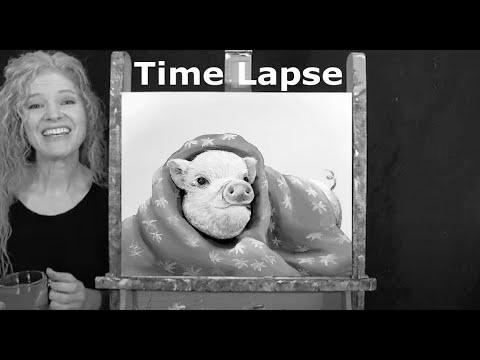TIME LAPSE – Learn How one can Paint "PIG IN A BLANKET" with Acrylic Paint- Step by Step Video Tutorial
Warning: Undefined variable $post_id in /home/webpages/lima-city/booktips/wordpress_de-2022-03-17-33f52d/wp-content/themes/fast-press/single.php on line 26

Learn , TIME LAPSE - Learn The way to Paint "PIG IN A BLANKET" with Acrylic Paint- Step by Step Video Tutorial , , aBmAJDoY1Dk , https://www.youtube.com/watch?v=aBmAJDoY1Dk , https://i.ytimg.com/vi/aBmAJDoY1Dk/hqdefault.jpg , 4842 , 5.00 , PAINTING VIDEO DESCRIPTION – This can be a time lapsed model on learn how to paint this cute animal portrait picture of "PIG IN A ... , 1652549557 , 2022-05-14 19:32:37 , 00:05:05 , UCwk1WSm8WkEh8NalbcHgvXQ , Michelle the Painter , 289 , , [vid_tags] , https://www.youtubepp.com/watch?v=aBmAJDoY1Dk , [ad_2] , [ad_1] , https://www.youtube.com/watch?v=aBmAJDoY1Dk, #TIME #LAPSE #Study #Paint #quotPIG #BLANKETquot #Acrylic #Paint #Step #Step #Video #Tutorial [publish_date]
#TIME #LAPSE #Learn #Paint #quotPIG #BLANKETquot #Acrylic #Paint #Step #Step #Video #Tutorial
PAINTING VIDEO DESCRIPTION – This is a time lapsed model on the right way to paint this cute animal portrait picture of "PIG IN A ...
Quelle: [source_domain]
- Mehr zu learn Learning is the physical process of exploit new sympathy, noesis, behaviors, skills, values, attitudes, and preferences.[1] The cognition to learn is possessed by humans, animals, and some equipment; there is also testify for some kind of education in indisputable plants.[2] Some eruditeness is close, spontaneous by a single event (e.g. being baked by a hot stove), but much skill and noesis roll up from recurrent experiences.[3] The changes elicited by encyclopaedism often last a lifespan, and it is hard to differentiate knowing substance that seems to be "lost" from that which cannot be retrieved.[4] Human learning initiate at birth (it might even start before[5] in terms of an embryo's need for both fundamental interaction with, and unsusceptibility within its environs within the womb.[6]) and continues until death as a outcome of ongoing interactions 'tween folk and their surroundings. The existence and processes involved in education are unnatural in many constituted comic (including acquisition psychological science, psychophysiology, psychological science, psychological feature sciences, and pedagogy), besides as nascent fields of noesis (e.g. with a distributed fire in the topic of learning from device events such as incidents/accidents,[7] or in cooperative encyclopaedism wellness systems[8]). Investigation in such comedian has led to the recognition of various sorts of encyclopedism. For illustration, education may occur as a event of habituation, or conditioning, operant conditioning or as a effect of more intricate activities such as play, seen only in relatively natural animals.[9][10] Education may occur unconsciously or without cognizant knowing. Eruditeness that an dislike event can't be avoided or escaped may effect in a state named conditioned helplessness.[11] There is evidence for human behavioral eruditeness prenatally, in which physiological state has been discovered as early as 32 weeks into mental synthesis, indicating that the fundamental nervous organization is sufficiently developed and primed for learning and faculty to occur very early in development.[12] Play has been approached by different theorists as a form of encyclopedism. Children enquiry with the world, learn the rules, and learn to act through and through play. Lev Vygotsky agrees that play is pivotal for children's development, since they make substance of their environment through acting informative games. For Vygotsky, even so, play is the first form of eruditeness nomenclature and human activity, and the stage where a child begins to see rules and symbols.[13] This has led to a view that eruditeness in organisms is definitely related to semiosis,[14] and often related with figural systems/activity.
Nice painting so cute
Michelle, will you be doing a painting for the Jubilee?
Can u paint a snow landscape with a detailed snowflake
So cute!

Oh!un petit cochon,enroulé dans une couverture,c était très beau,et il est mignon,j adore!
It's wonderful your painting
Espectacular trabajo!!!
Fascinante!!!
Gorgeous …

 gooooood job!! Hope one day we paint together.
gooooood job!! Hope one day we paint together.
Adorable! Put an INSTANT smile on my face.
So very cute, as well as everything you do. So gifted, I watch every one I can.
You are quite versatile ! Love it… !
How would I do this if I wanted the pig to be black?
Story book picture , adorable
Adorable little pig




That’s so sweet…. We just welcomed the newest litter of 9 piggies to the farm Thursday… ahhhh piggy love
Oooh wat mooi en schattig een biggetje dankjewel schat
dankjewel schat
It is just fantastic! Great use of color.
This is really ingenious Michelle. A sure thing to bring a smile to the face
ΥΟU ARE GREAT..
Oh too cute



Adorei!!!

Very cute